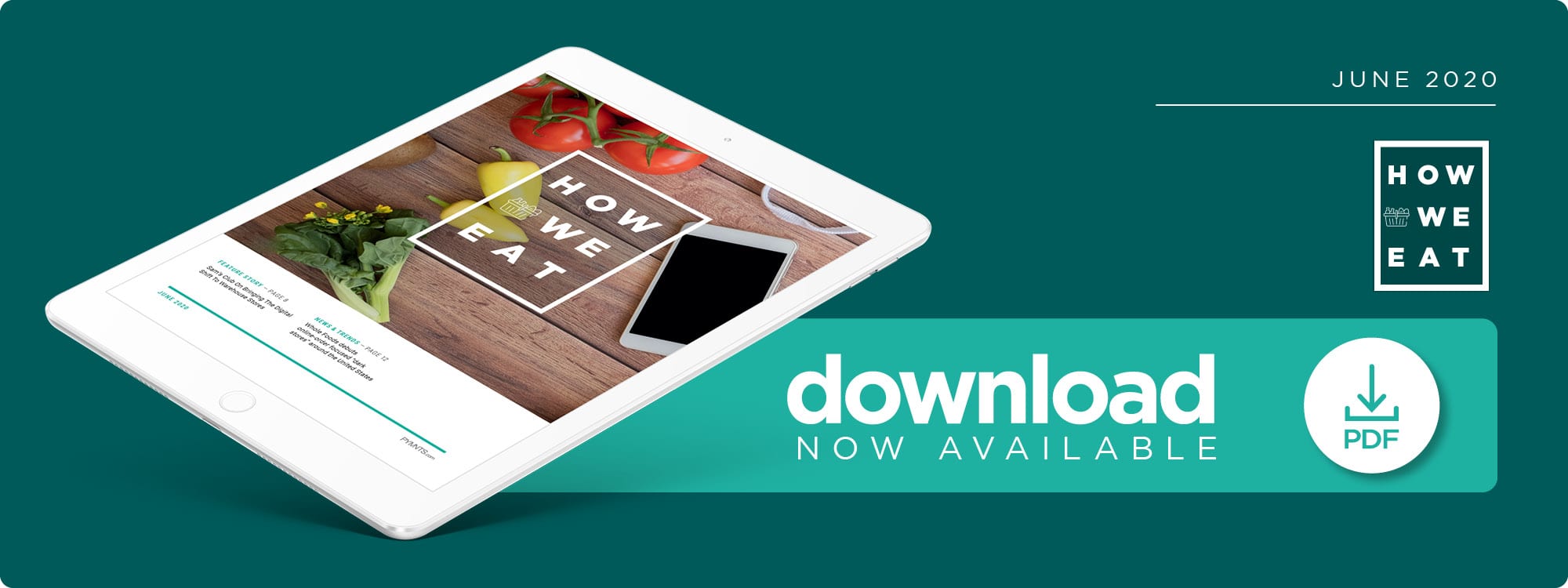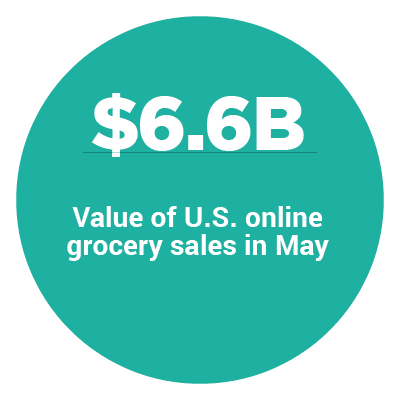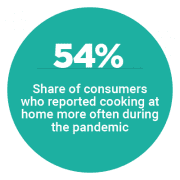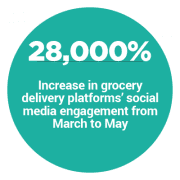New Report: Sam’s Club On Bringing The Digital Shift To Warehouse Stores
 It is difficult to think of an aspect of consumers’ lives that has not been thoroughly disrupted by the pandemic.
It is difficult to think of an aspect of consumers’ lives that has not been thoroughly disrupted by the pandemic.
There is one area where the changes are both profound and easily overlooked, however: how consumers eat. With restaurants by and large still closed, consumers are shopping for groceries far more — and they are turning to their digital devices to do so, through online ordering, delivery apps and curbside pickup. The share of U.S. consumers who went online to shop for groceries surged nearly 400 percent from early March to late M ay, according to PYMNTS research.
ay, according to PYMNTS research.
Digital innovation in the grocery and food industries was already well underway before COVID-19, but the pandemic has brought it to the front burner. In the inaugural edition of the How We Eat Tracker®, PYMNTS examines how food producers, distributors, wholesalers and retailers — tech giants to small farms — are adapting to these rapid shifts.
Surveying A Changing Food Economy
The big players driving this digital shift are well-known: Amazon, Whole Foods, Target and Walmart, all of which had robust online and mobile ordering operations before the pandemic hit and have seen online sales volumes grow dramatically since. The upstart in the field is third-party delivery service Instacart, which has seen orders increase more than 400 percent since last year.
The growth in online grocery ordering services has given rise to another trend: dark stores, or facilities used solely for the preparation  and distribution of mobile grocery orders. If the restaurant industry is any guide, dark stores could become the new ghost kitchens, which serve the growing number of mobile-order food establishments without physical storefronts. Whole Foods has opened six dark stores, such as in San Francisco and New York, and other chains have plans to do so, including Stop & Shop and Kroger.
and distribution of mobile grocery orders. If the restaurant industry is any guide, dark stores could become the new ghost kitchens, which serve the growing number of mobile-order food establishments without physical storefronts. Whole Foods has opened six dark stores, such as in San Francisco and New York, and other chains have plans to do so, including Stop & Shop and Kroger.
All the grocery shopping consumers are doing, whether online or in-store, has led to a dramatic rise in cooking at home, according to one recent survey. The report found that 54 percent of consumers are cooking more during the pandemic, and 51 percent expect to continue their cooking habits even as restaurants steadily reopen. This does not necessarily mean that consumers are eating healthier at home, however. While 39 percent said their food choices have been healthier since the pandemic, 40 percent said they have been more “indulgent.”
How Sam’s Club Is Enhancing Its Digital Channels And Creating New Ones
Membership-based warehouse stores are known for offering good deals on bulk products — and more utilitarian shopping experiences than Whole Foods, for example. Yet members of these stores have also been making greater use of digital shopping tools, and the pandemic has revealed their value in a whole new light. In 2016, Sam’s Club debuted its Scan & Go app, which allows customers to scan UPC barcodes on products and to avoid checkout lines. Use of the app has increased nearly fivefold since March, according to the company, and this month it is rolling out curbside pickup at all of its nearly 600 stores. In this month’s Feature Story, Eddie Garcia, senior vice president and chief product officer for Sam’s Club, explains how such services not only make customers’ shopping experiences more convenient but safer, and why these benefits will likely endure beyond the pandemic.
About The Tracker
The How We Eat Tracker® examines how digital technology is transforming the food economy.
